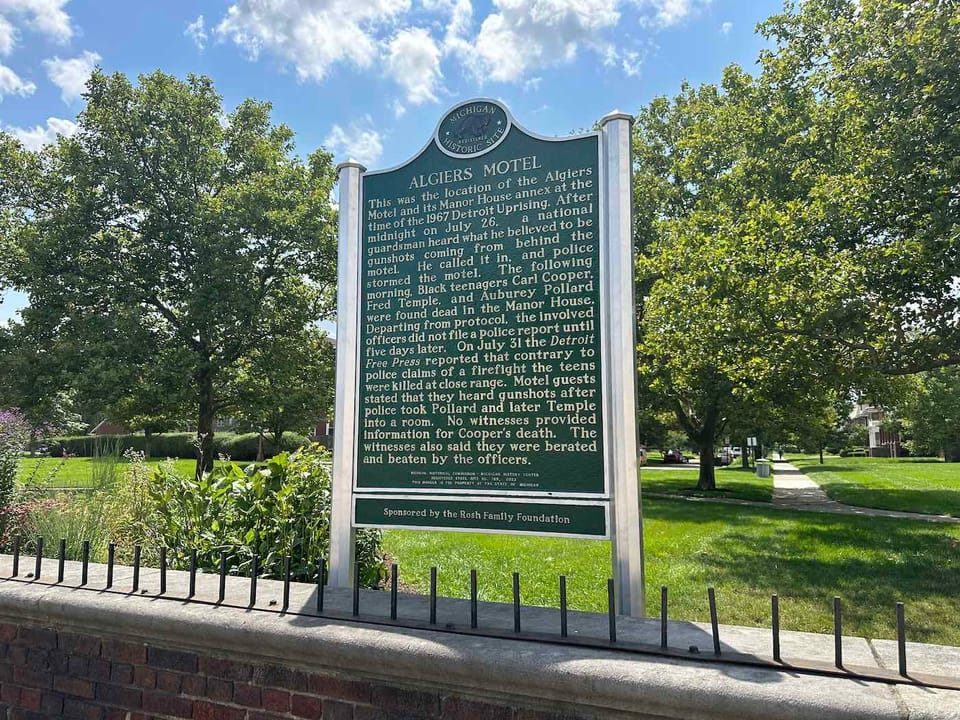The terms “hustle” and “hustler” are big in culture today, especially here in Detroit. “Detroit Hustles Harder” is a popular shirt and slogan. People waking up and Snapchatting “Time to rise and grind” and talking about how hard they hustle or are hustlers.
But hustler? As in someone who goes after their goals and works hard? That’s a very old term.
Described in an 1891 book, “Detroit in History and Commerce” our hustler we’ll talk about here was described as “ … a young man — thirty six years of age — and in popular parlance, is what might be termed a ‘hustler.’”
Yes, in 1891, they were using the word “hustler.” Everything old is new again, after all.
So who was this aforementioned hustler?
Meet Frederick K. Stearns of Stearns & Company.
Detroit’s top (legal) drug family
Frederick K. Stearns was born to his father Frederick A. Stearns, a druggist (today, much of their job would be considered as a pharmacist) in 1854 in Buffalo, New York.
The elder Frederick Stearns brought his family to Detroit in 1855. He first had a small store with a partner called Higby & Stearns, but then started manufacturing drugs in the back of the storefront, with a separate facility opening in 1871.
The father had the first commercial phone line in the state run from his downtown retail store to his laboratory in 1877, as well as made other smart business moves.
Although there’s a historical marker on Woodward Avenue between Larned and Congress streets to commemorate this historic moment, the actual address of the store may have been 173 Jefferson.
By 1881 or ’82, depending on the source, a few years after the first telephone line, Stearns had gotten rid of his retail operations and went all-in on manufacturing.
Family business dynasties are a real thing in Detroit. Often very large companies were passed to children or relatives, whether it’s the well-known Ford Family, the Hudsons (creator of both the retail store and the car brand), the Vernor family, or many more. Stearns would follow that pattern.
Joining the company in 1887, the younger put his own stamp on what would become, for a time, the largest drug manufacturer in the largest drug manufacturing city in the country, Detroit as well as Detroit sports and culture.
Frederick K. was a skilled marketer. In those early days, drug companies made some medicines that would not pass FDA approval today. Many of them were “patent medicines,” based often on alcohol and a mix of other substances.
An innovation for Stearns was their line of “nonsecret” medicines. Stearns & Company was among the first to list all the ingredients in their products, so people knew what they were taking. This built trust with their customers at a time when the government rarely got involved with consumer protection.
He expanded the business, with offices not just in the United States and Canada but eventually in Australia, England, India, South America and South Africa, taking advantage of better transportation technology available.
Stearns & Company was also a medical cannabis manufacturer until 1937, when the ingredient was de facto made illegal in the United States through a tax act.
Sports, Arts & Architecture
In 1885, Frederick K. bought and invested in big name players for the Detroit Wolverines baseball team, winning the city of Detroit’s first World Series championship by defeating the St. Louis Browns in 1887.

Back then, Detroit was in the National League. They played roughly where the southern part of the Detroit Medical Center is now at Recreation Park, where Brush Avenue is now south of Alexandrine. Unfortunately, Detroit wasn’t a big city then and couldn’t support the salaries of successful players and the team disbanded in 1888.
It didn’t end at sports. Not only was Stearns a musician himself, he was a founder of the Detroit Orchestral Association, a forerunner organization of the Detroit Symphony Orchestra today.
In Ann Arbor, a collection of more than 2,500 musical instruments, the basis of which is from the Stearns family, is kept at the University of Michigan’s school of music.

Built in 1902, Frederick K’s house, Red Gables, where he lived with his wife and children still stands at 8109 Jefferson Avenue (that’s the address on the building, even though that contradicts the post we link to). It is now office space. For a time it was home to the Belle Isle Conservancy (they’ve since moved to 300 River Place).
There are some blurry photos of the inside at an old real estate listing here from when it was last sold in 2015. The last time I was inside this building was a few years ago, and many of the common rooms still had their historic character.

Finally, the largest and most visible of his architectural legacies is one you simply can’t miss if you’ve ever driven down Jefferson, especially near Belle Isle. You can, for the right price, even live in it. The Stearns Pharmaceutical Building was built in 1899 and are now lofts. That renovation happened in 1989.
Frederick K. Stearns in his later years eventually moved west to California and died in Beverly Hills in 1924.
Like many names of Detroit history, the company the Stearns family built has been consumed by a series of acquisitions. Winthrop-Stearns became Sterling-Winthrop which eventually was gobbled up by Eastman Kodak and now, the pharmaceutical giant Bayer.
Although the company is gone, the father and son Stearns family has left another legacy you can see today beyond buildings. The basis of the Detroit Institute of Arts Egyptian collection was originally their private collection.
The story of Frederick K. Stearns shows that Detroit always hustled harder … even at the turn of the last century.
















